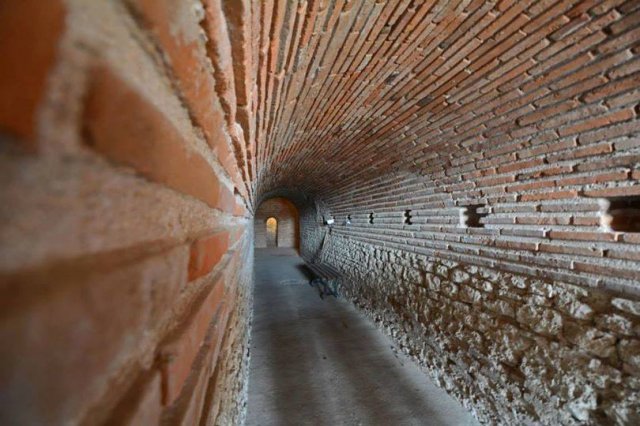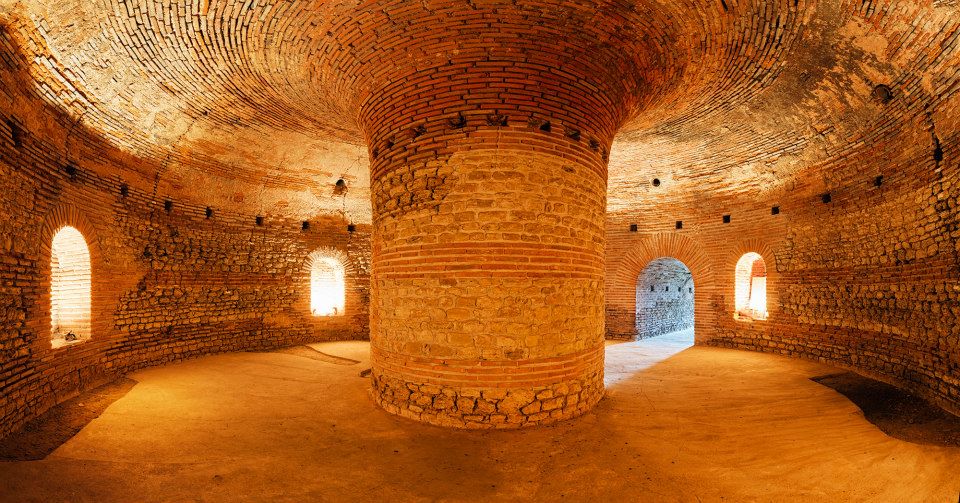Pomorie thomb
The Pomorie ancient domed tomb “Kuhata Mogila” is one of the largest in our land. It is known as the Thracian domed tomb near Pomorie or simply the Pomorie tomb but it is neither entirely clear whether it is really Thracian nor whether it is a tomb at all. Since our forefathers from those times have not left written words we have only their rich material heritage but it raises more questions than it answers.
This is the largest burial facility ever discovered in Bulgaria and is a cult complex located under an elliptical mound with an impressive diameter. It consists of a long entrance corridor (dromos), two side vestibules and a cylindrical chamber with a hollow column in the middle, protruding above the surface of the mound and covered with an arch. However, it is believed that some time ago it was uncovered above. There are several niches in the walls of the main chamber

You have hardly seen a Thracian mound of similar size, with such space inside and such an interesting and bizarre construction. They are unusual for Thracian tombs but not inexplicable as their building has practically stopped in the third century BC after the collapse of the Macedonian Empire. And the Pomorie tomb is a much later creation dating from the II-IV century.
This tomb is visibly different from the usual Thracian tombs. Its architecture – with a central column and a dome, as well as the method of construction, arouses curiosity because they are similar to the Roman constructions from this period. An arch of this type, carried by a column, is an architectural solution that first appeared in Rome at the very end of the 3rd and the first decade of the 4th century. Also, no special burial chamber, typical for the other Thracian tombs, was found in the facility. In the hollow column inside there are traces of a spiral staircase, apparently allowing one to climb to the top. Traces of doors in the dromos and vestibules clearly show that the facility was used repeatedly and was closed with a latch inside. According to experts, the temple has the architecture of a Roman mausoleum (heroon). Mausoleums of a similar type are known in Italy. But the mound layout connects it quite directly with the Thracians.

During the modern discovery of the facility no artifacts were found inside so all the information was extracted from its construction. It is dated to the II-III century – the time of the Roman era in these lands. Like other Thracian tombs from earlier epochs, this one is entered through a dromos – a long and narrow corridor, in this case 22 meters. At the beginning, on both sides, there are unearthed remains of two rooms which seem to have been closed with small doors. They may have served for leaving gifts inside them, or they may have been a place for pilgrims or priests to spend the night.
The dromos leads to the wide main hall of the tomb – about 11 meters in diameter with a hollow column (about 1.20 meters in diameter) in the middle. The construction has layers of flat bricks and limestone blocks and it is this construction technique and precise workmanship that lead to the idea that the building was erected not earlier than the end of the 2nd century. There are several niches in the round room in which urns and ritual objects were probably placed. Inside the dome there are traces of frescoes which suggests that perhaps the temple was once painted. In addition, no artifacts have been found in or around the temple to tell more about its history or its purpose. The whole tomb is covered with earth and shaped like a mound. For years it was known among the locals as the Hollow Mound (Kuhata Mogila).
